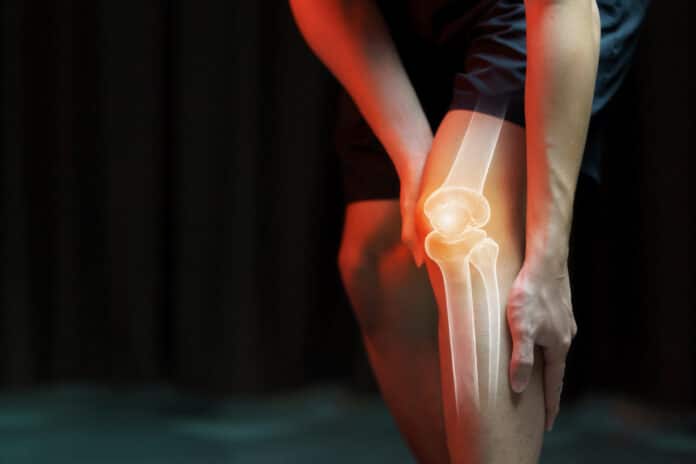Osteoarthritis (OA) is a common type of arthritis that significantly affects people’s quality of life. It’s one of the top 10 conditions causing Years Lived with Disability, showing how much it impacts people before they get better or pass away. So far, there are no approved treatments that can slow down the progression of this disease. One reason it’s been tough to develop treatments is that the ways we’ve tried to mimic the disease in animals are different from how it happens in humans, where it usually takes many years to develop and only sometimes starts with joint injuries.
Now, researchers from Boston University‘s Chobanian & Avedisian School of Medicine propose that we can study people who’ve had knee injuries, like anterior cruciate ligament tears (ACL), to better understand and evaluate treatments for OA.
Corresponding author David T. Felson, MD, MPH, professor of medicine and epidemiology at the School of Medicine and Boston University School of Public Health, said, “Given the repeated, expensive, and discouraging past failures in the development of effective treatments for OA, a new approach is needed that focuses research into effective treatment on those with early disease.”
While most people recover from a significant joint injury like an ACL tear, a few continue to have pain and can develop OA. Felson believes there are enough such patients, and we can identify them in advance to create a group at high risk for the disease. This group could then be used to test treatments preventing OA from developing.
The current treatments for joint pain, like nonsteroidal anti-inflammatory drugs (NSAIDs), work for some people. However, they have limitations because they can be harmful. Exercise and weight loss are effective, but many people struggle to stick with them in the long run. The number of knee replacement surgeries proliferates, suggesting that non-surgical treatments haven’t relieved pain and disability.
Boston University and Cleveland Clinic researchers studied data from the Multicenter Orthopaedic Outcomes Network (MOON), which included 2,340 people who had ACL reconstructions (ACLR) following knee injuries.
The MOON research revealed that 26% of ACL reconstruction patients experienced at least moderate knee pain during daily activities, particularly when climbing stairs or walking. They also found that 16.6% had Knee Injury and Osteoarthritis Outcome Score (KOOS) pain scores below 80 on a 0-100 scale, indicating that mild to moderate pain is relatively common after ACLR.
The researchers used MOON’s risk factors, which included pain and structural changes in all joint tissues, especially cartilage loss, to identify individuals at high risk of future hurt. By doing so, they could create a group of people at high risk of experiencing significant pain after ACL reconstruction.
This approach offers a chance to prevent the development of osteoarthritis, which is especially valuable for young adults who may suffer from joint pain and disability for years before becoming eligible for joint replacement surgery.
The research suggests a promising approach for assessing potential treatments for osteoarthritis by studying individuals with a history of knee trauma. This method enables the identification of high-risk groups suitable for testing interventions to prevent OA.
Such an approach is precious for young adults who may experience prolonged joint pain and disability before becoming eligible for joint replacement surgery. The findings contribute to the development of more effective treatment strategies for OA and have been published in the Annals of the Rheumatic Diseases.
Journal reference:
- David Felson, Martin K Lotz et al., New approach to testing treatments for osteoarthritis: FastOA. Annals of Rheumatic Diseases. DOI: 10.1136/ard-2023-224675.
